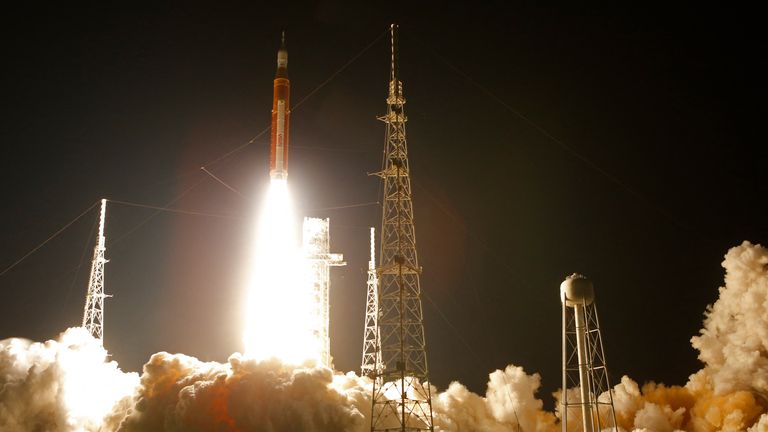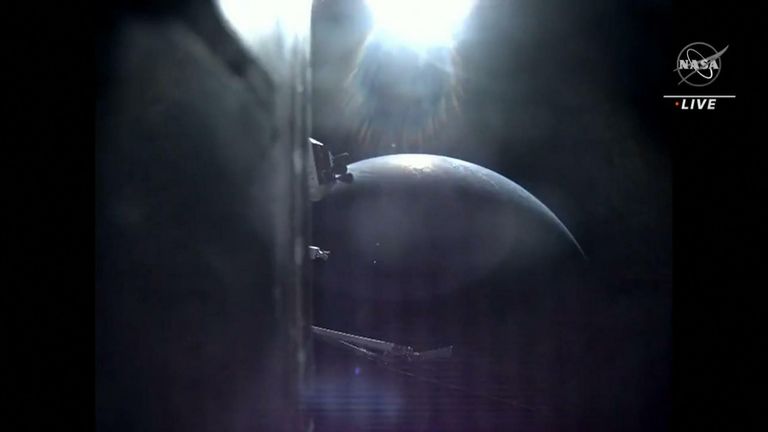NASA’s Orion capsule is orbiting the moon for the last time on its way back home — passing several Apollo landing sites along the way.
The capsule passed within 80 miles of the far side of the Moon, using the Moon’s gravity as a slingshot, returning 237,000 miles (381,414 kilometers) to Earth.
It has spent a week in a wide lunar orbit.
Once it emerged from behind the moon and reconnected with flight controllers in Houston, Orion sent back a close-up photo of the distant moon and a photo of the crescent Earth — Earthrise.
“Orion now has its sights set on homeland,” said Mission Control commentator Sandra Jones.
It was targeting a Pacific splashdown off the coast of San Diego on Sunday.
So far, the three-week test flight has exceeded expectations, according to officials.
But the biggest challenge lies ahead – hitting the atmosphere at more than 30 times the speed of sound and surviving a fiery re-entry.
During this week’s orbit around the moon, the capsule flew past the landing sites of Apollo 12 and 14.
But at 1,200 miles (1,931 kilometers), it’s too high to make out the descent stage of a lunar lander or anything else left by astronauts more than 50 years ago.
read more:
People ‘living on the moon within a decade’
First Moon samples brought back to Earth in 40 years
Orion’s first flight on November 16 nasaThe most powerful rocket ever built, the Space Launch System (SLS).
The next flight – as early as 2024 – will attempt to fly four astronauts around the moon.
The third mission is scheduled for 2025, when astronauts will complete the first mission to the moon since the Apollo lunar program ended 50 years ago this month.
On December 7, 1972, Apollo 17 launched from NASA’s Kennedy Space Center carrying Eugene Cernan, Harrison Schmidt and Ron Evans.
Mr Cernan and Mr Schmidt spent three days on the lunar surface, the longest stay in the Apollo era, while Mr Evans orbited the moon.
Only Mr. Schmidt is still alive.

